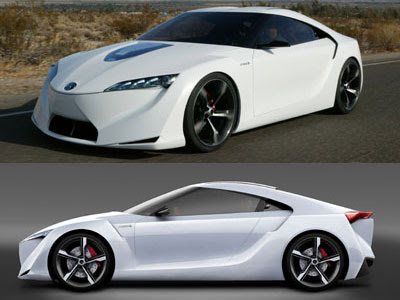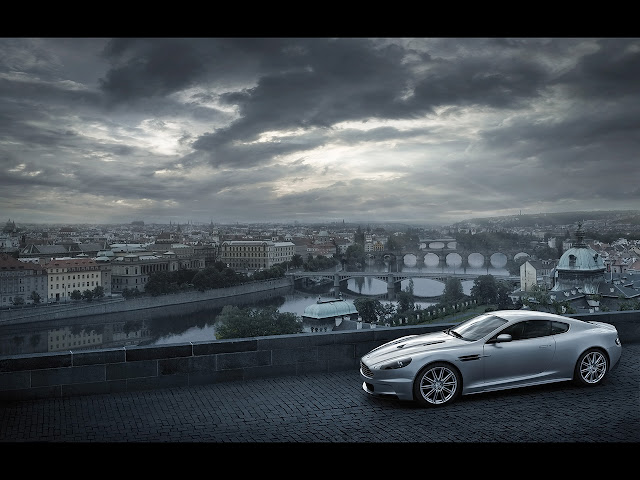Toyota Supra 2010
 Toyota Supra 2010
Toyota Supra 2010Gossips love concept vehicles, especially those that seem to belong in showrooms already. Take the Toyota FT-HS. Unveiled at the 2007 Detroit Auto Show as a "21st-century sports car," it reminded some of Toyota's well-liked Supra. And why not? It's another high-style sporty coupe with rear-wheel drive, a six-cylinder engine, and seating for four. Obviously, a new Supra was on the way, and with gas/electric power to boot. After all, FT-HS stands for "Future Toyota-Hybrid Sport."
Carmakers usually shrug off new-model rumors, but Toyota did the just opposite with the FT-HS. As Road & Track reported, a company spokesperson described the concept as "a car we all know Toyota should have. It would slide right into the slot where the Supra was, as a mid-price sports/GT car--something we need in our product line." Which implies a rival to the Nissan 350Z, which the concept closely matches in size, and not the Chevrolet Corvette, which the last Supra targeted. Trouble is, a strong yen 10 years ago priced the Supra out of its market. A new hybrid model could suffer the same fate, given today's weak dollar/yen exchange and hybrid technology that remains expensive.
Still, Toyota is a big company with huge cash reserves. And it remains committed to making gas/electric power just another option throughout its lineup. Moreover, Toyota likes to showcase its technology in distinctively styled niche vehicles like the compact Prius hybrid, that darling of Hollywood greenies. Add it all up and the case for FT-HS morphing into a new Supra looks pretty convincing. In fact, some oddsmakers say it's a sure thing.
Even if they're right, there's still the question of how much of the concept design could be retained for a "mid-price sports/GT." For example, the FT-HS powertrain assumes a 3.5-liter V6, familiar from many current Toyotas, but also a new Hybrid Synergy Drive that has yet to be developed. Toyota says the concept has a total 400 net horsepower, good for 0-60 mph in around four seconds, but has yet to project fuel economy or emissions ratings, except to say that both would be really good.
Then there's the concept's styling, with its many compound curves and sharp edges that would surely be expensive to produce even in modest volume. Other design elements, especially the wild "boomerang" instrument panel and no-hub steering wheel, would also have to be ditched for more-conventional, less-expensive components.

The FT-HS uses a carbon-fiber beam to divide the cockpit left and right. Toyota says it enhances structural rigidity, but it also lends what designers call a "skeletal" appearance. Another novelty is a power-operated carbon/Kevlar roof panel that pivots to stow in the rear-seat area. Nodding to Ferrari and Porsche are a see-through hood panel to show off the front-mounted engine and a rear spoiler that powers up at higher speeds to enhance stability. The spoiler idea would almost certainly survive on a new Supra, but the other features seem questionable because of cost and/or practicality. We'll see what Toyota delivers.
The 2009 Toyota Supra will likely be a limited edition to support both retail sales and residual values for the Toyota brand's newest performance and technology flagship. We'd guess no more than 5000 cars per year for the U.S. market, perhaps less. That spells a possible early first-year sellout, so be ready to pounce when the new Supra becomes official.
2010 Toyota Supra Release Date: It's unclear at the moment, but we'd look for the 2010 Toyota Supra by summer or fall of 2009--especially if a showroom-ready Supra "concept" appears at one of this winter's major auto shows. However, Toyota says its engineering staffs are now stretched to the limit by other new models planned for the next couple of years, so the Supra could be delayed.
2010 Toyota Supra Prices: The "mid-price sports/GT" description and sophisticated hybrid-drive hardware suggests the 2010 Toyota Supra would be priced well above the Nissan 350Z, perhaps close to the $70,000 high-performance Corvette Z06.
Source : Consumer Guide Automotive

Comments
Post a Comment